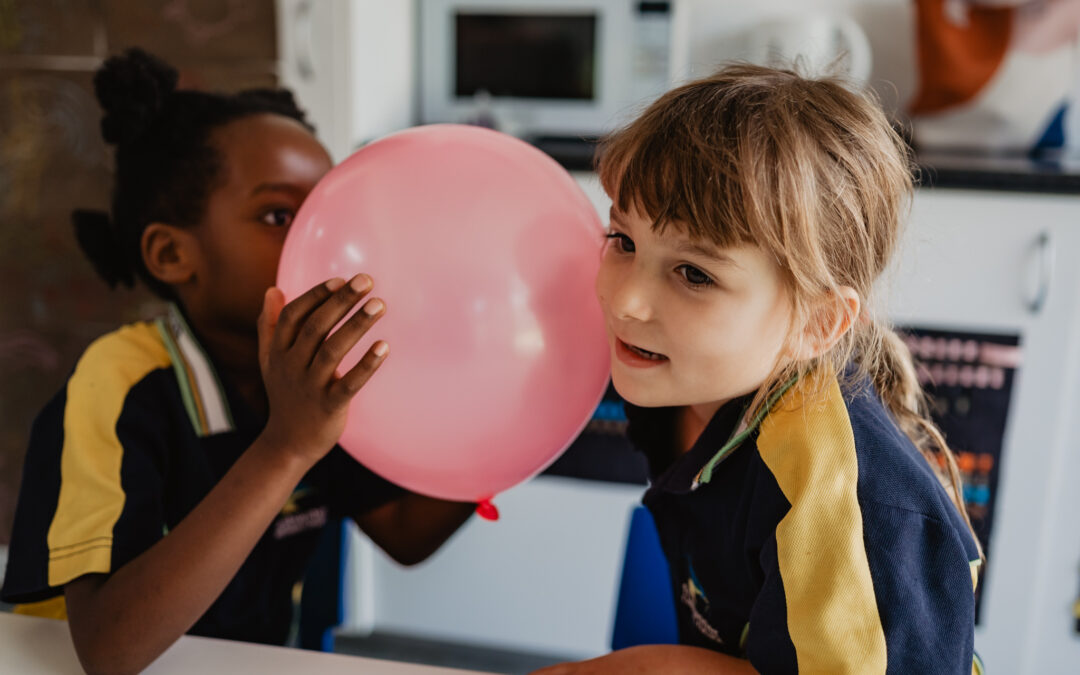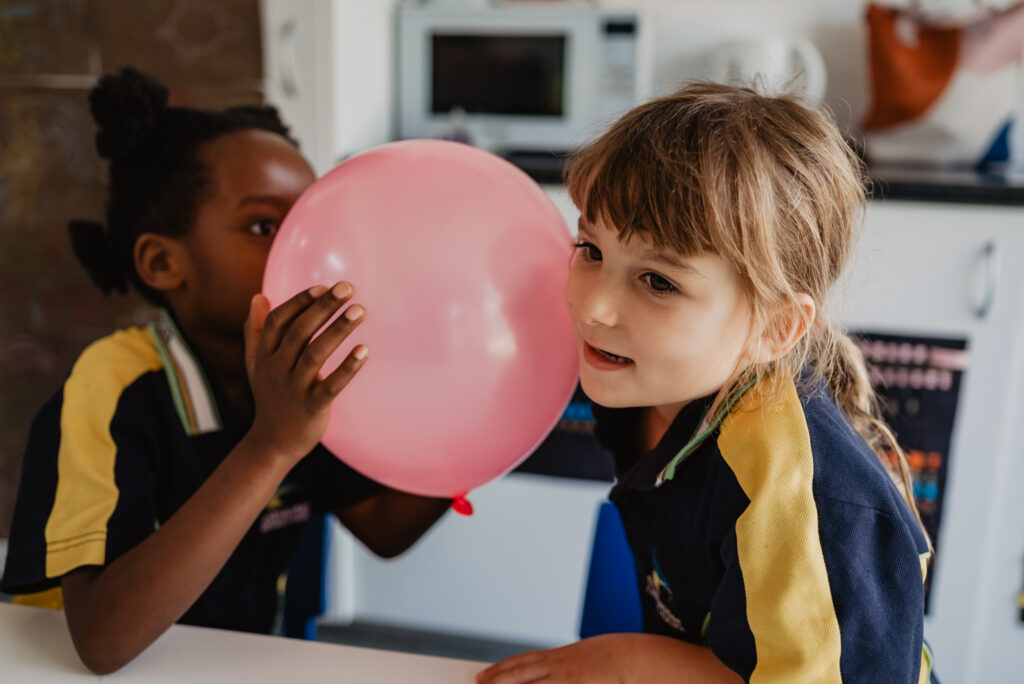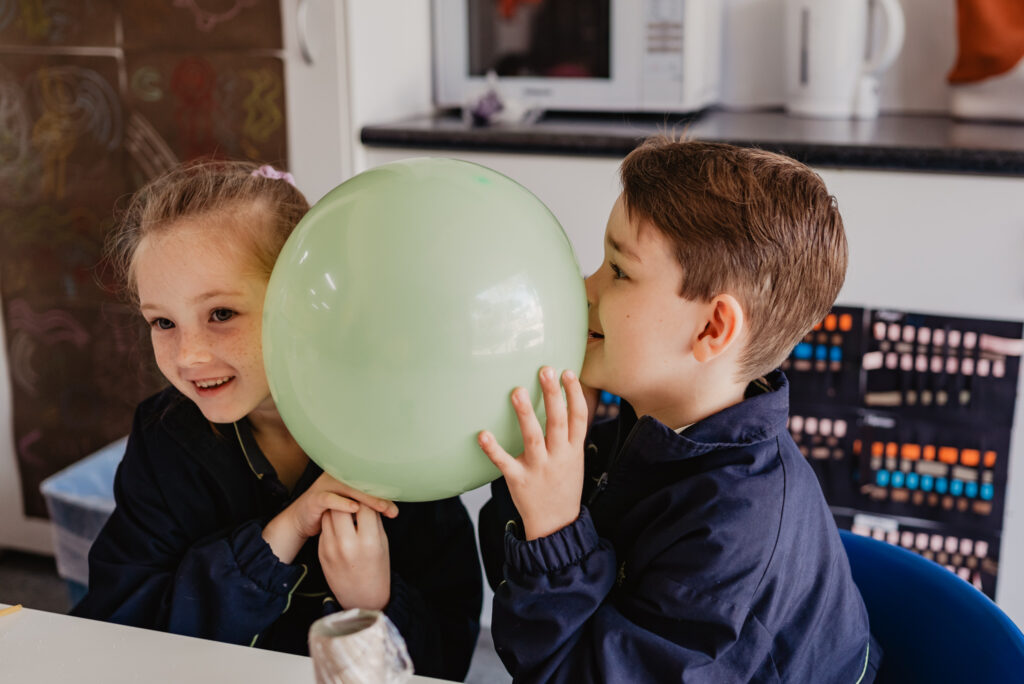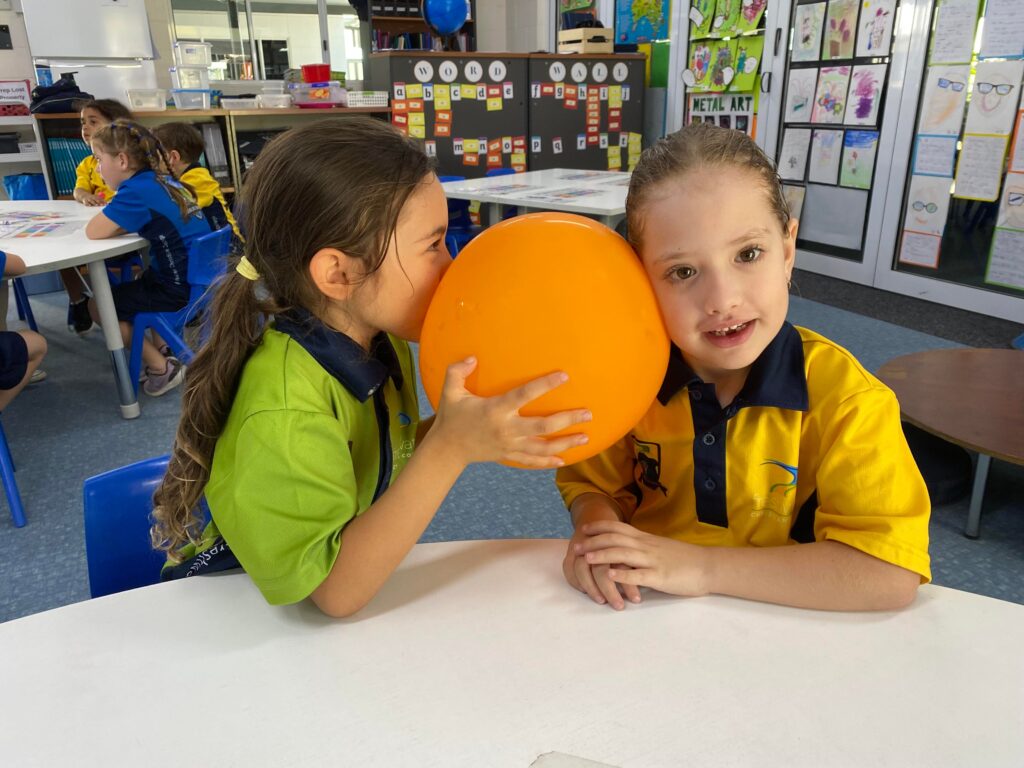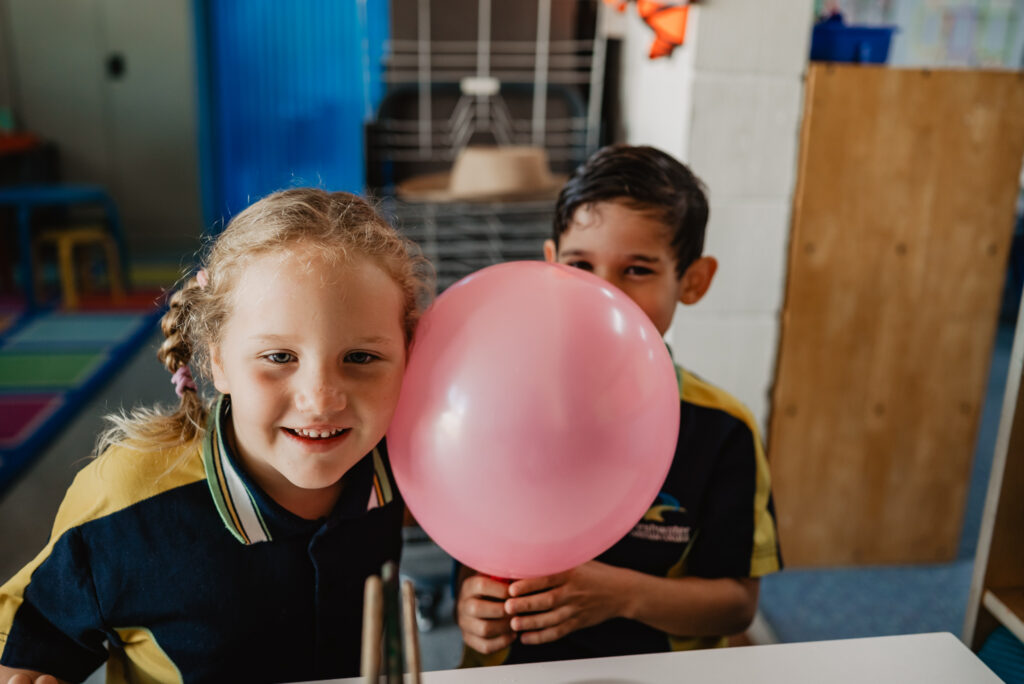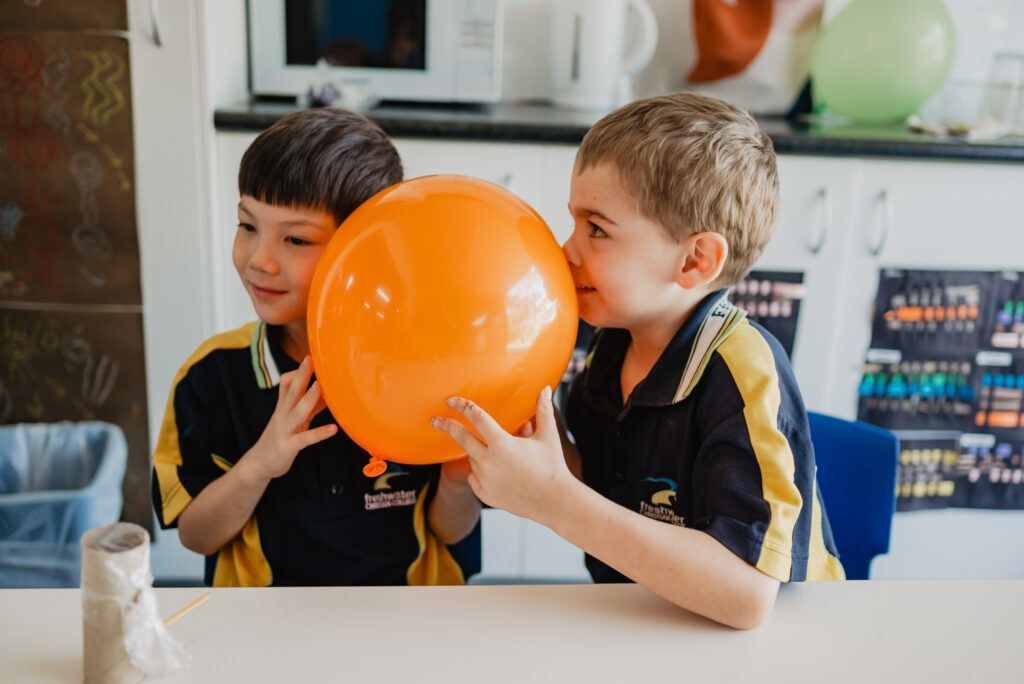Prep celebrated National Science Week in Cairns this term by investigating the science of sound and linking it to our Living Things Unit in our Cairns school. The following activities are all related to different sound experiments and learning about how sound is created, the way it travels and is used by some animals to survive.
1) Vocal Cords: Students now know that sound is energy made by vibrations and travels in waves. Students felt their throats to feel their vocal cords vibrate as they spoke and sang.
2) Tonoscope: Students made their own tonoscope using a cut paper towel roll, plastic wrap and a straw. A tonoscope allows you to make the sound waves from your own voice visible. A vibrating membrane (plastic wrap) spread with salt was able to pick up sound waves and make visible some patterns these waves create at various tones. It was a fun way to talk about the science of sound.
3) Echolocation: Using two paper towel rolls angled towards each other but not touching and a cake tin placed behind it. One student whispered into one tube and the other child listened for the sound to bounce off the tin and come back through the other tube. This experiment helped us in our living things unit, to understand how animals such as bats, dolphins and some birds use sounds to navigate their space. Echolocation is an adaptation to determine the location of objects using reflected sound. This allows the animals to move around in the dark to navigate, hunt, identify friends and enemies, and avoid obstacles.
4) Fork Bell: We tied string around a fork so that it hangs down and on both ends of the string tied it around some cotton wool. Students then placed the cotton wool in their ear (not deep) and had their friend lightly tap the fork. Students with the string and cotton wool heard the tap as a clear bell sound while their friend only heard a tap. The science around this is when you tap the fork you cause it to vibrate, and those vibrations will make sound waves. The string acted as a conductor, and the sound waves travelled up the yarn, instead of just spreading in the surrounding air.
5) Balloon Speakers: Students in pairs took turns whispering into a balloon while the other person had their ear to the balloon. Students heard the whisper as a loud message. We learnt that when you blow into the balloon you are pushing air molecules into the balloon. They are forced into a small area so are very close together and become a better conductor of sound waves than the ordinary air around you.
Mrs Sally Ganest
Prep Primary School Teacher
Want to visit our Christian Cairns school?
Book a College Tour with our Principal to explore our lush tropical Campus and find out more about our primary school. Book Now

